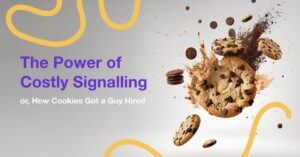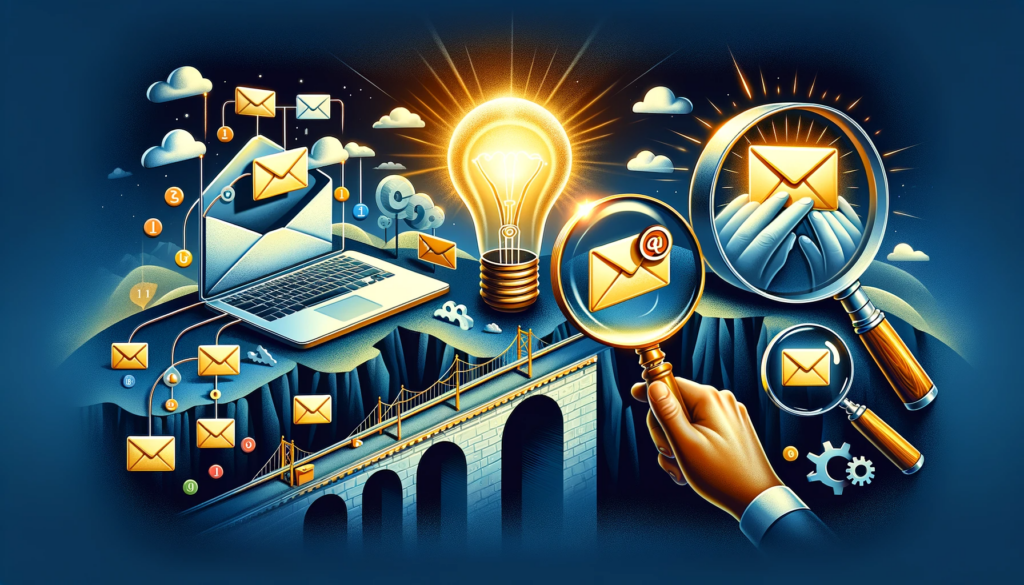The Power of Costly Signalling (or, How Cookies Got a Guy Hired)
Your message is only as strong as how you deliver it. Just ask Julian (and his famous cookies).
Read more
Cold outreach has become more difficult to generate results from in the past 2 years. Here are some new ideas to try.
Everyone is following the same cold email (or we can call it outbound. Same same.) formula.
The results of this? Near 0%.
The days of this strategy working are gone. Everyone is getting a handful of cold emails a week, and “banner blindness” is how we’re dealing with these cold emails today. Your emails aren’t being opened; if they are, it’s an instant archive or delete.
Luckily for you, we have some ideas to improve the success of your outbound campaigns.
If you’ve interacted with someone in the past via email, a phone call, or in person, your outbound to these people will always return the best results.
Always start here.
What is the easiest place to find these email addresses? In your address book.
Watch this video below, where I detail how to do this.
Who doesn’t love receiving packages and presents?
Find something memorable to send to your hit list of 10, 20 or 50 prospects you know are a great fit for you. Include a handwritten note, which is your “cold email”, and follow up with an email a few days after they’ve received the gift.
It doesn’t have to be an expensive gift. It could be a book, a kitchen accessory or a bottle of champagne. But whatever you do, DO NOT PUT YOUR LOGO ON IT.
Why? Unless it’s your company, no one keeps that gift that has some random supplier logo on it. It gets thrown in the bin. Memorable gifts are the ones that are genuine – and a genuine gift doesn’t have your logo on it.
Read Giftology: The Art and Science of Using Gifts to Cut Through the Noise, Increase Referrals, and Strengthen Retention by John Ruhlin. It has gift buying as a source of leads down to a science.
Get someone on Upwork to pull these LinkedIn connections and find their contact details. You’ll want to exclude all your friends, clients, and whoever is not a good fit, but you now have a list of people who have connected with you and have probably seen your updates on LinkedIn.
You now have another list of warm prospects.
Yes. A press release. 🙂
Take one of your current clients, write a case study in the form of a press release talking about the results you’ve gotten working with them and publish it to an industry or PR newswire website.
Then, email this press release as an attachment to other prospects in the same industry as your client to show them the results you could be getting for them.
Press release > case study. It’s the same thing, just framed differently.
How can you measure the success or effectiveness of these cold email strategies?
Measuring the success or effectiveness of cold email strategies typically involves tracking key metrics such as open rates, click-through rates, response rates, and conversion rates. Open rates indicate how many recipients are opening your emails, which helps assess subject line effectiveness. Click-through rates show how engaging your email content is and whether recipients are interested in your call to action. Response rates can help you understand how compelling your message is for prompting a dialogue. Lastly, conversion rates are crucial for evaluating how many recipients are taking the desired action, such as signing up for a service or making a purchase.
Are there specific industries or business types where these strategies are more effective?
The effectiveness of cold email strategies can vary across different industries and business types. For instance, industries that rely heavily on B2B, such as software, consulting, or marketing services, might succeed more with these strategies. The key is understanding the audience’s specific needs and pain points. Tailoring the approach to suit the recipient’s industry, role, and company size can significantly impact the effectiveness of these strategies.
What are the legal or spam considerations when sending gifts or using email addresses from LinkedIn?
When sending gifts or using email addresses from LinkedIn, it’s important to be aware of legal and spam considerations. Many countries have laws regulating commercial emails, like the CAN-SPAM Act in the United States, which sets rules for commercial messages and gives recipients the right to have you stop emailing them. Compliance with these regulations is crucial. Regarding LinkedIn, it’s important to use email addresses obtained from the platform responsibly. LinkedIn’s own terms of service should be adhered to, and it’s generally advisable to establish some form of initial contact or connection on the platform before sending direct emails.
How do you personalize cold emails when reaching out to a large number of prospects?
Personalizing cold emails when reaching out to a large number of prospects involves balancing scale with customization. This can be achieved through segmentation, where you divide your email list into smaller groups based on common characteristics like industry, company size, or job role. Using email templates with placeholders for personalization allows for efficient customization at scale. Tools and software are available that can automate parts of this process, helping to personalize emails based on the recipient’s information while maintaining a high volume of outreach.
We’d love you to share it with your friends, colleagues or your marketing team.
